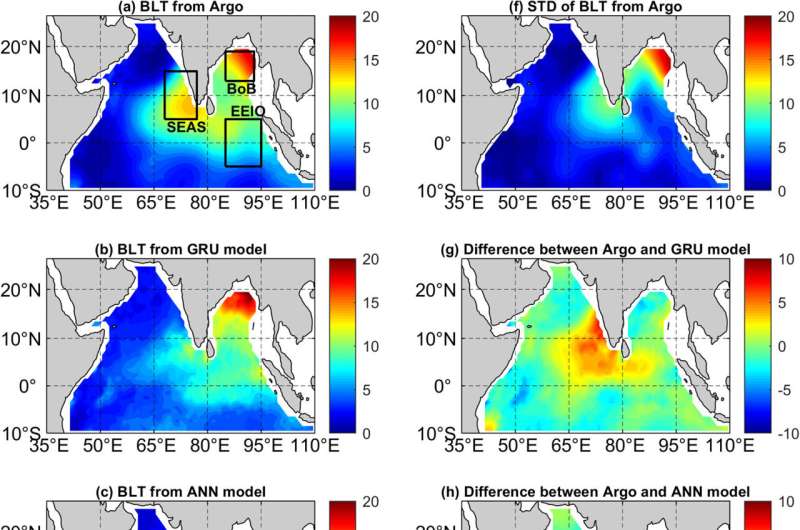This article has been reviewed according to Science X's editorial process and policies. Editors have highlighted the following attributes while ensuring the content's credibility:
fact-checked
trusted source
proofread
Meta-learning helps to estimate oceanic barrier layer structure

The oceanic barrier layer is situated between the base of the ocean's density mixed layer and the top of the isothermal layer, with its thickness fluctuations directly influencing the ocean's vertical mixing process. Changes in the barrier layer impact the transport of heat and salinity within the ocean, subsequently affecting regional weather and climate patterns.
Due to the limitations of observational data, acquiring high-quality empirical data of the oceanic barrier layer remains challenging. Hence, employing high-resolution satellite remote sensing data in tandem with observations to estimate key oceanic structures has become a pivotal topic in physical oceanography.
Recently, a research team led by Prof. Yin Baoshu from the Institute of Oceanology of the Chinese Academy of Sciences (IOCAS) has made progress in the estimation of oceanic barrier layer structures in cooperation with scholars from the University of California, Los Angeles (UCLA).
The team employed advanced meta-learning techniques, and integrated Convolutional Neural Networks (CNN), Gated Recurrent Units (GRU), and Artificial Neural Networks (ANN) into a novel multi-model ensemble approach, which enhanced the accuracy of the oceanic barrier layer's structure estimation.
The study was published in Environmental Research Communications on Sept. 25.
"By utilizing key sea surface parameters such as Sea Surface Temperature (SST), Sea Surface Salinity (SSS), and Sea Surface Wind speed (SSW), we were able to accurately reconstruct the structure of the oceanic barrier layer depth, with significantly reduced root mean square errors in the southeast Arabian Sea, Bay of Bengal, and eastern equatorial Indian Ocean," said Qi Jifeng, first author of the study.
This achievement not only overcomes the limitations of traditional observational techniques and numerical models but also highlights the immense potential and broad application prospects of machine learning, especially meta-learning, in marine research.
"Our study provides insights for a deeper understanding of ocean dynamics, promoting research into oceanic environmental changes, and addressing global climate change," added Prof. Yin.
More information: Jifeng Qi et al, Meta-learning-based estimation of the barrier layer thickness in the tropical Indian Ocean, Environmental Research Communications (2023). DOI: 10.1088/2515-7620/acf9e1
Provided by Chinese Academy of Sciences



















